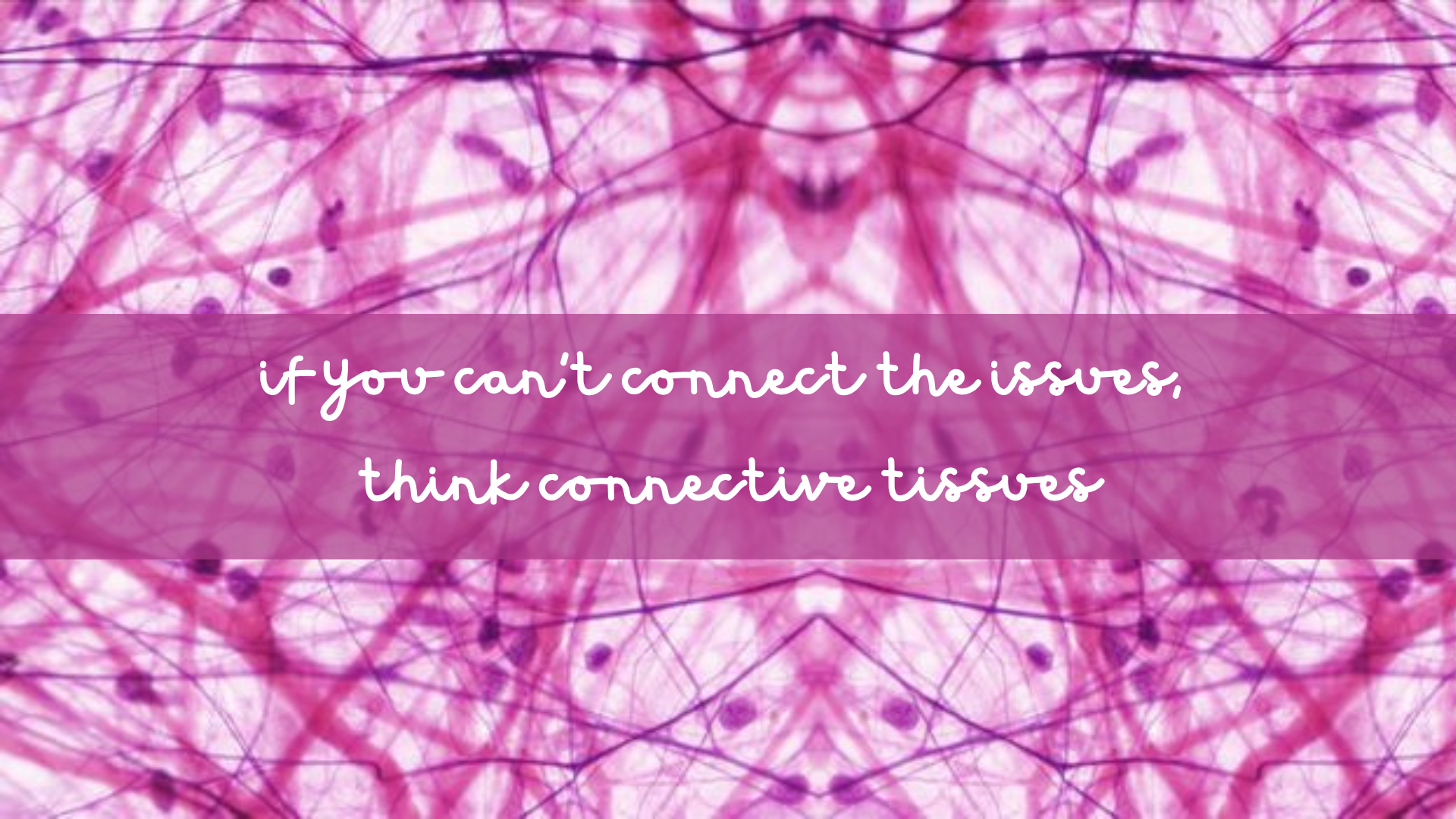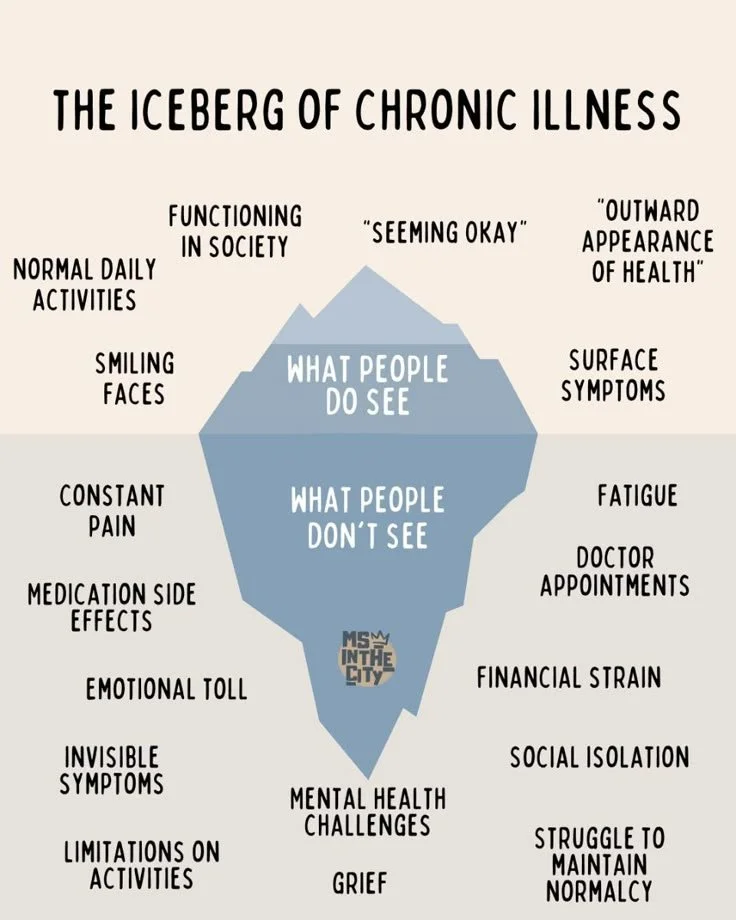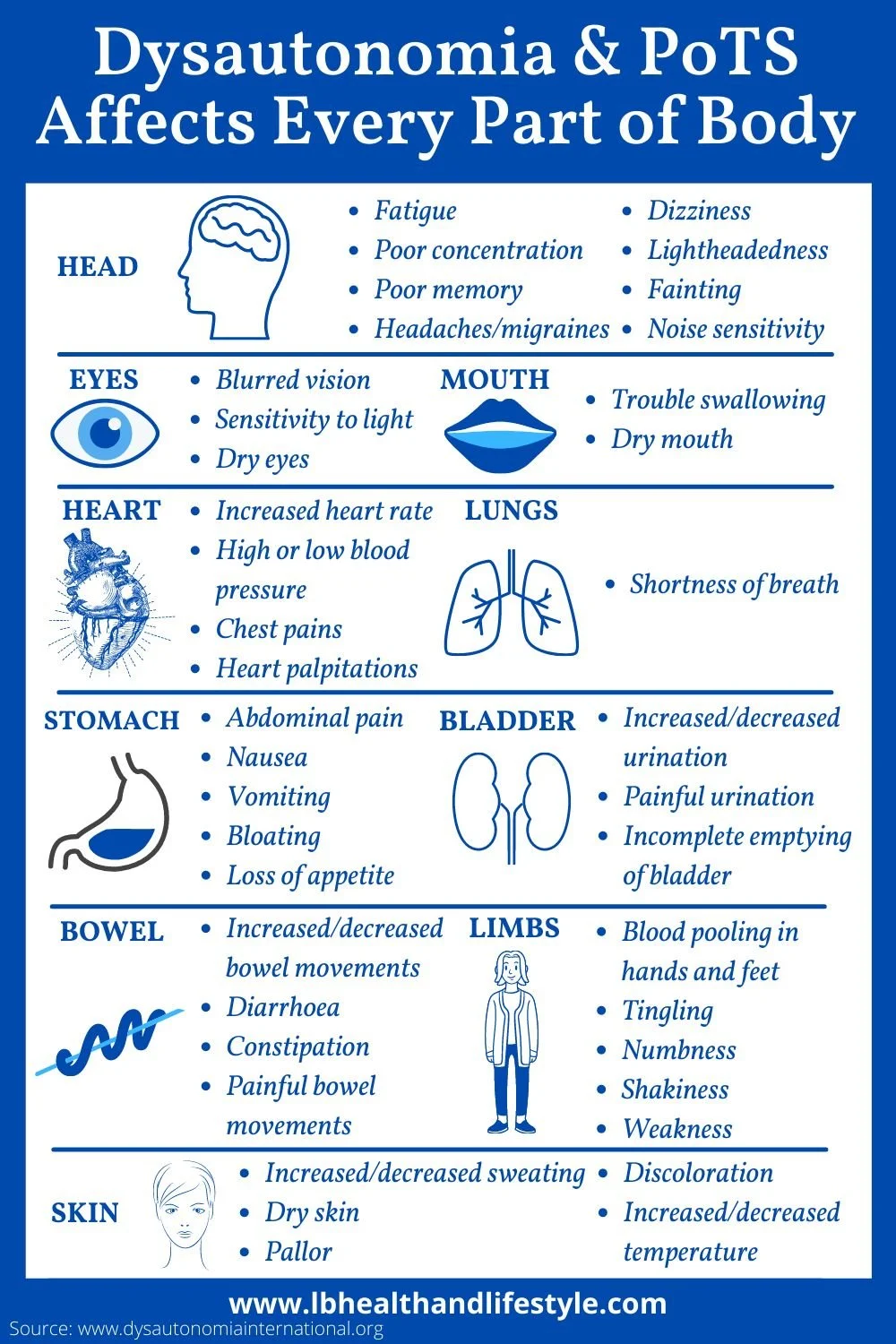
If You Can’t Connect the Issues, Think Connective Tissues
There’s a saying in the Ehlers-Danlos community: “If you can’t connect the issues, think connective tissues.”
It’s clever, but it’s also true. Ehlers-Danlos Syndrome (EDS) isn’t just a “joint problem.” It’s a connective tissue disorder — and connective tissue is everywhere in the body. It holds us together, literally. It provides structure, elasticity, and support for our skin, joints, blood vessels, organs, and more.
So when connective tissue doesn’t function the way it’s supposed to, the effects can ripple across every system.
Invisible Doesn’t Mean Imaginary
Invisible illnesses ask us to build a deep, trusting relationship with ourselves. To believe our bodies before the world does.To listen to the whispers before they become screams. To choose rest, nourishment, and grace even when no one else understands why we need them. There is a quiet kind of strength in that. A resilience that isn’t about pushing through, but about tuning in.
What is an NBC-HWC, and Why I Chose to Become One.
If you’ve spent any time exploring the world of health and wellness coaching, you might have wondered if there is any regulation on who can call themselves a “coach”. The truth is, there are a lot of folks out there coaching without any relevant education about behavior change strategies or motivational psychology. As you were doing your research (as you are right now, good job!), you might have seen the letters NBC-HWC floating around and wondered, what the heck does that mean?
The October Slide: Why Fall Can Be Tough with Chronic Illness 🍂
Every year, as the leaves change and the air grows crisp, many people living with chronic illness notice a familiar pattern: symptoms flare, energy drops, and daily life feels heavier. I like to call it the October Slide—that seasonal shift when our bodies seem to struggle keeping up with the changing world around us.
Hypermobility, Dysautonomia, and Yoga: Can They Really Mix?
Hypermobility? Dysautonomia? Yoga?
They don’t mix, right? 🦓🧂🥄
Well… not so fast.
As someone living with both Ehlers-Danlos Syndrome (EDS) and Postural Orthostatic Tachycardia Syndrome (POTS), I know firsthand how complicated movement can feel. For years, yoga was overwhelming for my body—too stretchy, too activating, too much. But when I discovered restorative yoga, everything shifted.
Feeling Salty? Electrolytes: how they work, and why they matter.
When you live with Postural Orthostatic Tachycardia Syndrome (POTS), you quickly learn that hydration isn’t just about drinking enough water — it’s about electrolytes. These tiny minerals (like sodium, potassium, and magnesium) are the unsung heroes that help regulate fluid balance, blood pressure, and nerve signaling in the body.
It’s not in your head (literally) - you might have POTS.
If you’ve ever stood up too quickly and felt your heart race, you’ve had a tiny glimpse into what living with Postural Orthostatic Tachycardia Syndrome (POTS) can feel like. POTS is a form of dysautonomia — which means the autonomic nervous system, the part of the body that controls things we don’t consciously think about (like heart rate, blood pressure, and digestion), doesn’t regulate as smoothly as it should.
What is hypermobility, anyway?!
Simply put, hypermobility means your joints move beyond the usual range. Some people are naturally "bendier" and everything works fine—but for others, it’s more than unique flexibility; it's a constellation of symptoms that go beyond bendiness.
Living with hEDS, POTS, and MCAS: What I’ve Learned About Resilience
Getting diagnosed was simultaneously the most terrifying and relieving experience I’ve ever had. I wasn’t being dramatic, I was experiencing unmanaged chronic illness symptoms my whole life, and that led to really intense burnout. When I’m burnt out, I kinda feel like how Winnie looks when she sploots on the porch. Flop. Now that I know my body works a little differently, I know how to manage my symptoms effectively. These are some of the ways I remain resilient with chronic illness.









